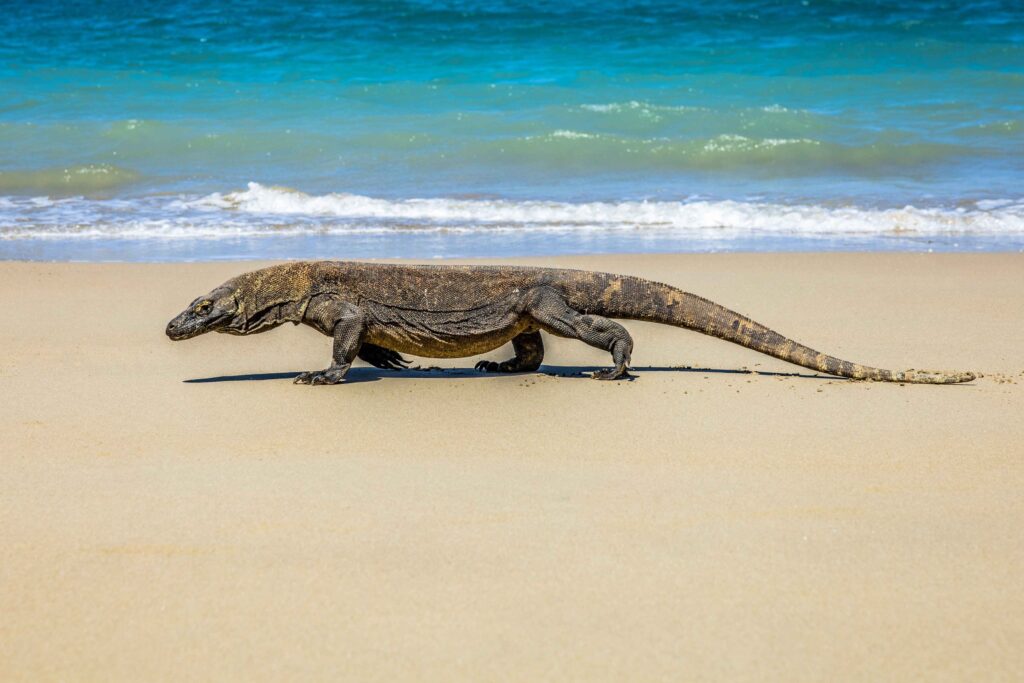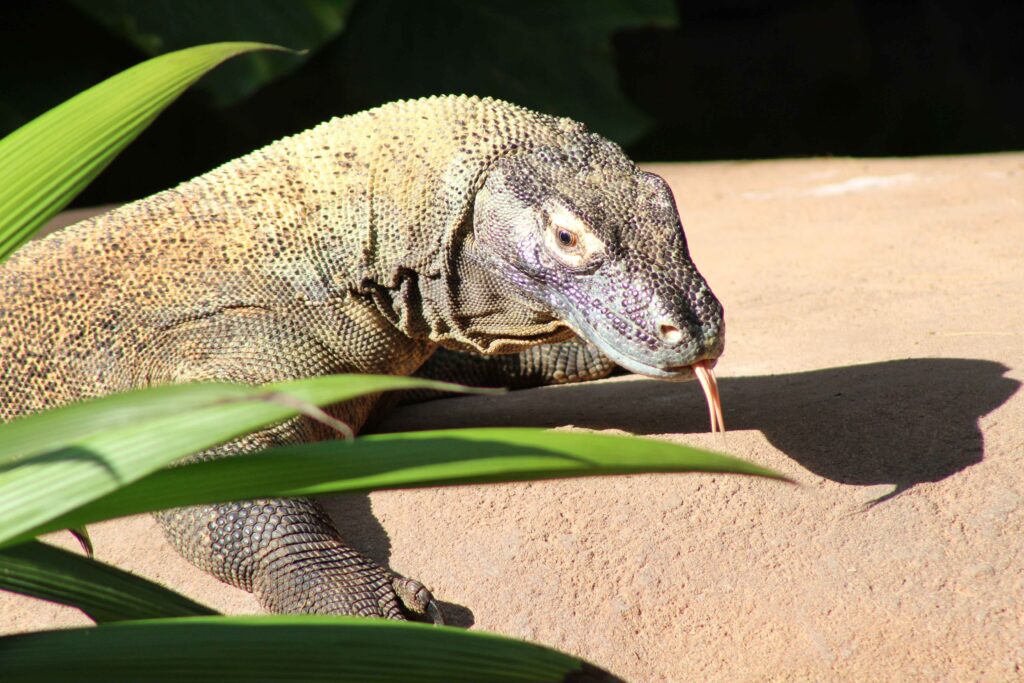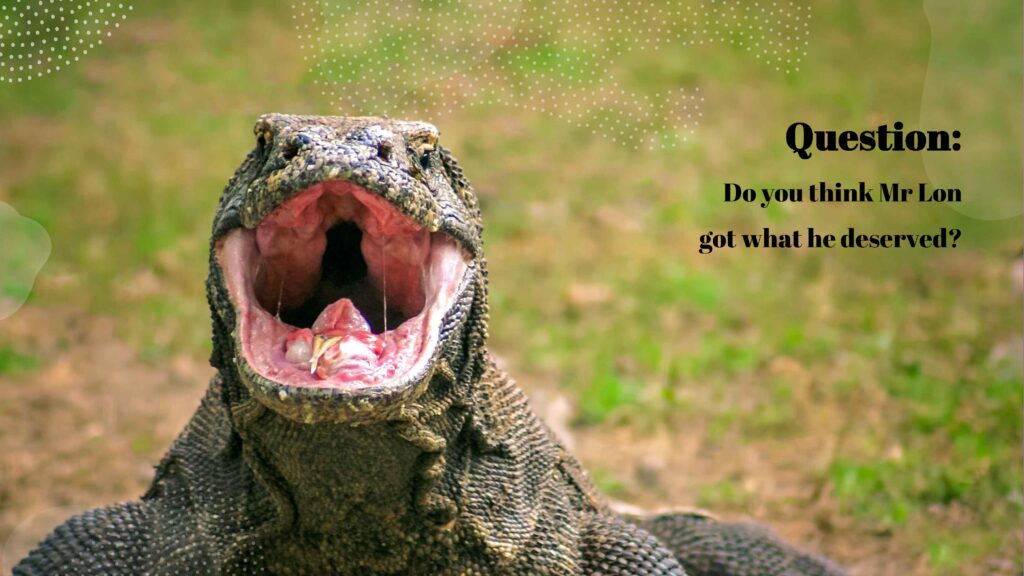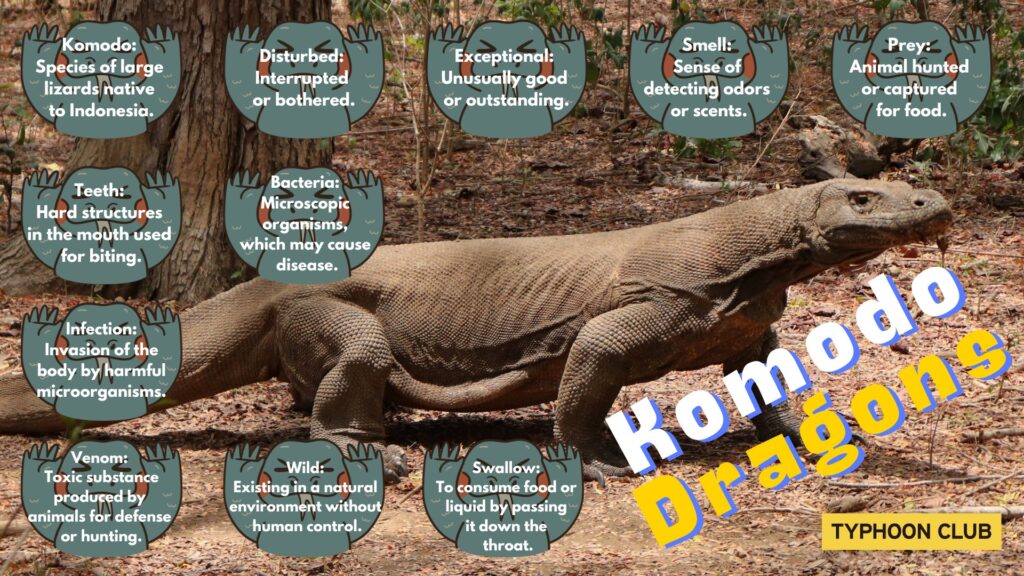
Did you Know?
Komodo dragons eat 88 percent of what they kill. Lions usually leave behind 25 to 30 percent of their kill.
Mr Lon Lee Alle is from Singapore. He was recently visiting an Indonesian island so he could see the famous Komodo dragons. Mr Lon did not want to pay for a tour guide, but he was very keen to take some close-up photos of the dragons when they were eating. Like most wild animals, Komodo dragons do not like to be disturbed when food is around. They turned on Mr Lon and one of them took a large bite out of his leg. He was rushed to the hospital by military speedboat. Luckily, he survived.

Komodo dragons are the largest and heaviest lizards in the world. They can only be found on a few Indonesian islands including the island of Komodo. Even though they look as if they should have wandered the Earth with the dinosaurs, they remain exceptional killing and eating machines.

They have a very strong sense of smell which they use to help them find their next meal. A forked yellow tongue flicks in and out of their large mouths, sampling the air for other animals. Even though Komodo lizards can run up to 20 kilometres per hour (but only for short bursts), they prefer to wait for their kill.
When the attack does come, the dragon targets the prey’s feet first, knocking it over. Then, its sharp and fearsome teeth rip the animal to pieces. These large, curved teeth contain scraps of rotting flesh from their last meal and are filled with bacteria – sometimes up to 60 different types. One bite will cause an infection in the wounded animal that will lead to a very painful death a few days later. The Komodo dragon will track and follow the animal, waiting for it to collapse.

It has recently been discovered that Komodo dragons also have venom in their gums. The venom stops the prey’s blood from clotting and causing it to bleed to death – if the infection does not get it first.
Komodo dragons are well known for being able to swallow large amounts of food with amazing speed. Like snakes, they can unlock their jaw so their mouths can open wider.
Today, there are about 4,000 Komodo dragons in the wild. Five people have been killed and 30 injured by dragon bites in the past 40 years. Would Mr Lon have attempted to get so close to the dragons had he known just how dangerous they are?
Question:

VIDEO: Let’s visit Komodo Island!
VOCABULARY
